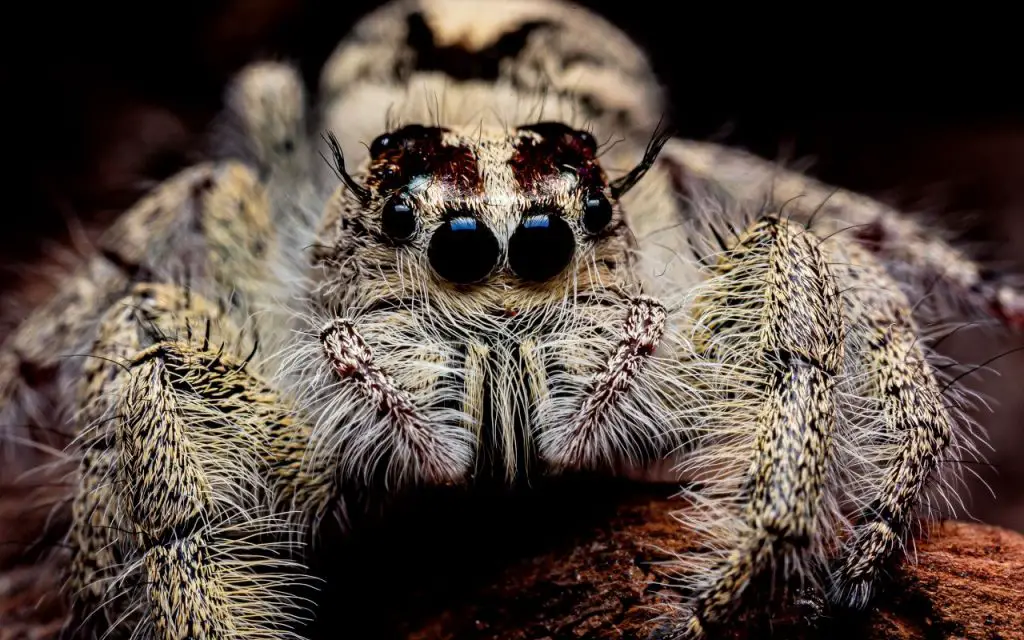Last updated on June 25th, 2023 at 02:15 pm
Jumping spiders are fascinating creatures that are known for their incredible jumping ability. These spiders are incredibly agile and can jump many times their own body length to catch prey or avoid danger. But just how far can a jumping spider jump? In this blog post, we’ll explore this question and take a closer look at the incredible jumping ability of these amazing spiders.
Jumping spiders are all good jumpers
Jumping spiders are a diverse group of spiders, with over 5,000 different species found around the world. Despite this diversity, all jumping spiders share certain characteristics when it comes to jumping. Jumping spiders are able to jump such great distances due to a unique anatomical structure that allows them to store and release energy in their legs.
Jumping spider anatomy
The anatomy of jumping spiders includes several key features that allow them to jump great distances. These include their muscular legs, which are covered in specialized hairs called scopulae that help them grip surfaces, and their large, forward-facing eyes, which provide them with excellent depth perception and help them to accurately judge distances.
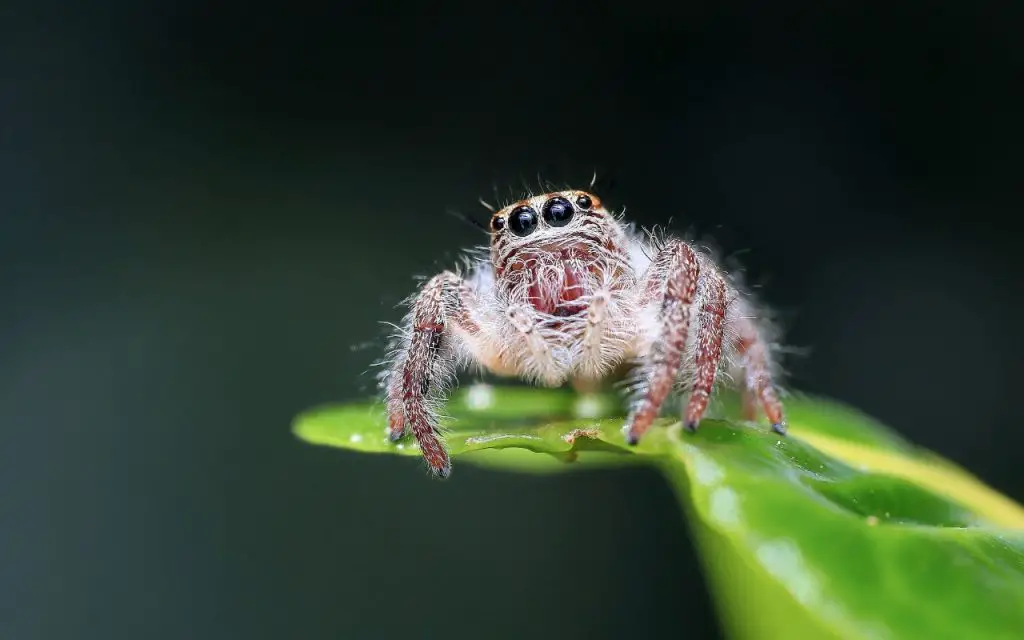
How far can they jump?
So, just how far can a jumping spider jump? The answer to this question depends on several factors, including the species of spider, its size, and the surface it is jumping from. In general, jumping spiders are able to jump distances ranging from a few centimeters to thirty times their own body length.
It is often said that Bold jumping spiders are able to jump distances of up to 50 times their own body length. Another study even found that Regal Jumping Spiders could jump 6.3 inches (16cm).
However, this impressive feat was only achieved by larger spiders that had longer legs and more powerful muscles. Smaller jumping spiders were only able to jump distances of a few centimeters.
Factors that affect how far they can jump
The distance that a jumping spider can jump is also affected by the surface it is jumping from. Jumping spiders are able to jump further on smooth, flat surfaces than they are on rough or uneven surfaces. This is because smooth surfaces provide better traction, allowing the spider to more effectively transfer energy from its legs to the surface it is jumping from.
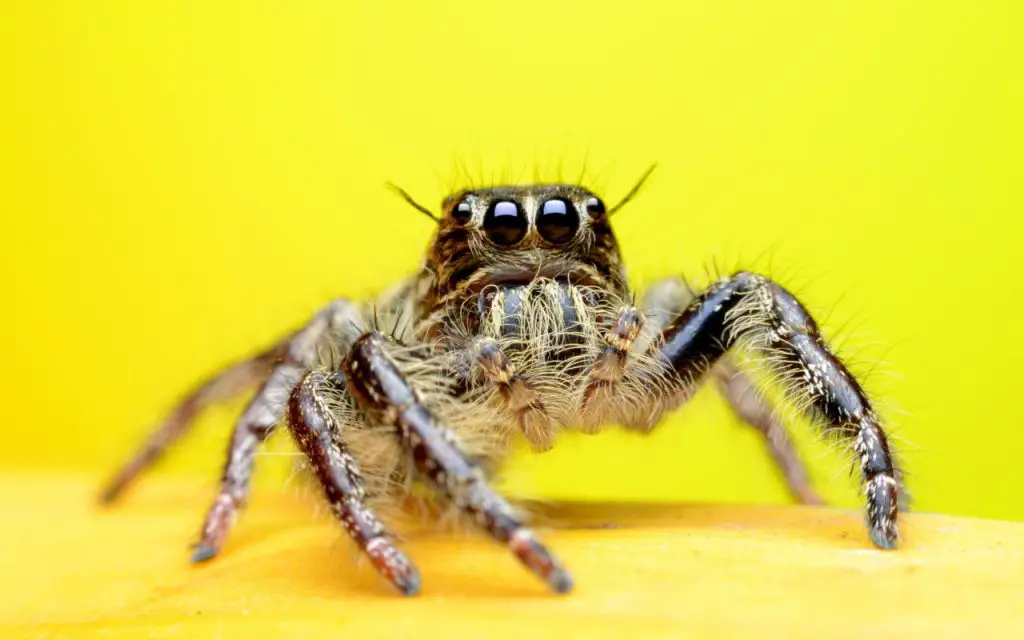
Why they jump
The jumping ability of jumping spiders is not just impressive, it is also an important survival strategy. Jumping spiders use their jumping ability to:
- catch prey
- evade predators
- find mates
- travel to new areas by way of ballooning. This is a process where they let out a thread of silk, and use it to travel on the wind. They can do this from a stationary position, or by jumping off something first
When hunting, jumping spiders will often stalk their prey and then launch themselves at it, using their powerful legs to pounce on it.
Jumping spiders are also able to use their jumping ability to avoid danger. If a jumping spider feels threatened, it will quickly jump away from the danger, often landing on a nearby surface and scurrying away to safety.
Observing jumping spiders
So, now that we know how far jumping spiders can jump, what can we do to observe their incredible jumping ability? One way to do this is by keeping jumping spiders as pets. Jumping spiders are easy to care for and can be kept in small enclosures, such as jars or terrariums. Watching a jumping spider jump and hunt its prey can be a fascinating and rewarding experience.
Another way to observe the jumping ability of jumping spiders is by watching them in the wild. Jumping spiders can be found in a variety of habitats, including forests, fields, and even urban areas. To observe jumping spiders in the wild, you can look for them on walls, tree trunks, and other surfaces where they are likely to be hunting or hiding.
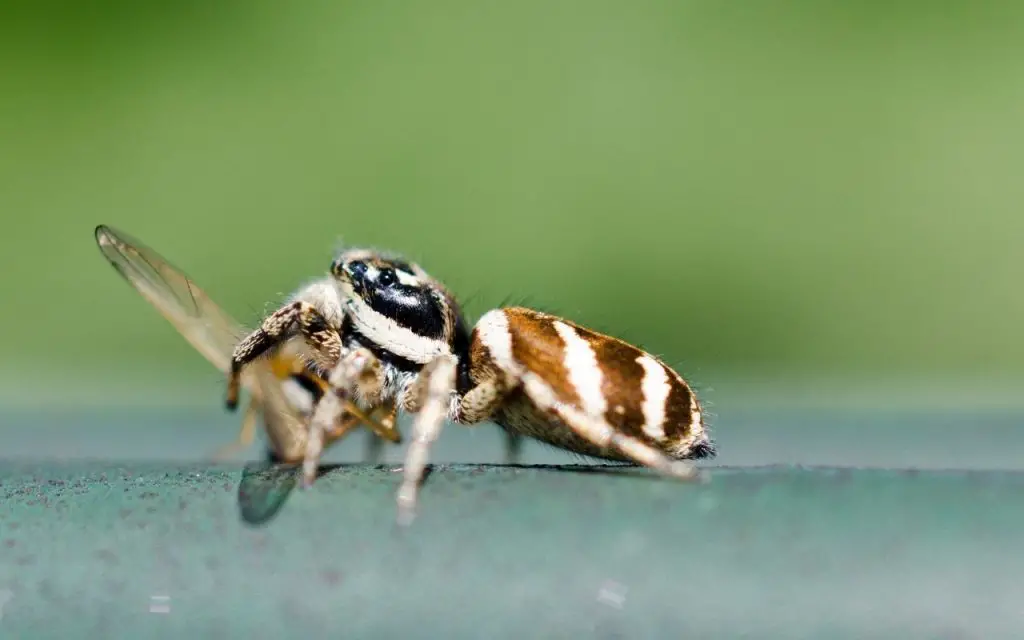
Final thoughts
In conclusion, jumping spiders are fascinating creatures with an incredible jumping ability. In fact, the Salticidae spiders (their latin name), are one of my favorite groups of arachnids to keep as pets.
While the distance that a jumping spider can jump depends on several factors, including its size and the surface it is jumping from, these spiders are capable of jumping distances ranging from a few centimeters to several times their own body length.
By observing jumping spiders in the wild or keeping them as pets, we can gain a greater appreciation for their amazing jumping ability and unique behaviors.
If you want to get familiar with these spiders, but haven’t been able to buy one yet, I would advise you to go out on a sunny day and look on flat surfaces. Fences, walls, rocks, and tree trunks are all great places to spot them.
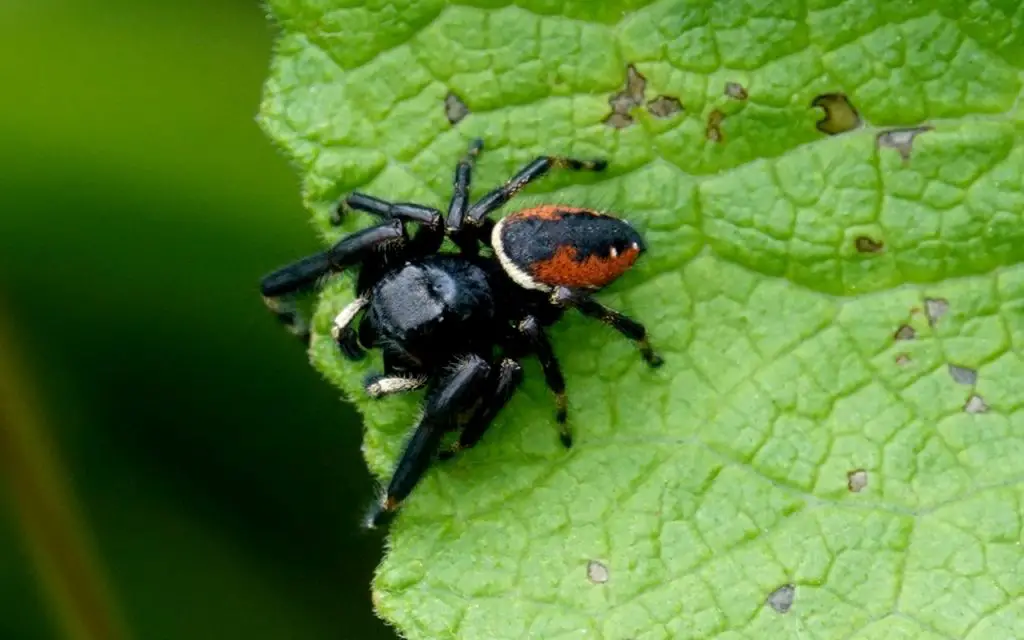
Will my jumping spider jump away?
Jumping spiders are known for their incredible jumping abilities, and they use their jumps to escape from danger or catch prey. If you approach a jumping spider too quickly or make sudden movements, it may feel threatened and jump away. However, if you approach slowly and calmly, you may be able to observe the spider without it jumping away.
What happens if a jumping spider jumps on you?
If a jumping spider lands on you, it is likely just exploring its surroundings or searching for prey. Jumping spiders are not aggressive towards humans and are not venomous. They are unlikely to bite unless they feel threatened, so it’s best to remain calm and let the spider crawl away on its own.
Why do jumping spiders wave at you?
Jumping spiders are known for their curious and inquisitive behavior, and they may wave their front legs as a way of communicating with other spiders or potential mates. They may also wave their legs as a way of assessing their surroundings and determining whether a potential prey item is within reach.
Do jumping spiders get attached to humans?
Jumping spiders are not social animals and do not form attachments to humans or other animals. However, they may become accustomed to the presence of humans if they frequently encounter them in their environment. If you have a jumping spider in your home, it may learn to recognize you and may become less fearful of your presence over time.

